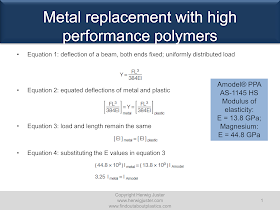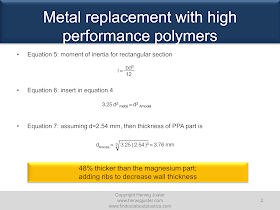 |
| Holbox, Mexico - bottle collection box in the shape of a fish |
Before the Covid-19 pandemic stroke in Europe, especially in Italy, Spain, France and Germany, we were far away on holiday in Mexico. It was end of February 2020 when our holiday started and two weeks later, Italy and Germany announced the restriction of going out to flatten the infection curve. The Covid crises spread all over Europe causing the healthcare systems to be highly exhausted.
During our holiday, I made several observations on how plastic-based products facilitate the life of people in areas where jungle dominates and infrastructure is limited. We visited the island of Holbox, located in the north east of Yucatan surrounded by the Gulf of Mexico. It is connected to the mainland over a fair, starting from Chiquila.
 |
| Holbox, located in the north east of Yucatan surrounded by the Gulf of Mexico |
As you can imagine, things in a well-established system on the mainland, can work on an island completely different. Drinking water supply is a major challenge on islands. Here, plastics packaging plays a major role to ensure fresh drinking water supply. In the example of Holbox island, drinking water supply is ensured by a daily truck loaded with 10, 18 up to 20 liter water bottles coming from Chiquila. Once arrived on the island, the truck drives to the major square and people all over the island come to pick up such bottles to be used in their homes. They also bring their used bottles back for recycling purposes. Most of the bottles are made out of Polyethylenterephthalate (PET). The wall thickness is increased compared to a standard 1 liter PET bottle, since more mechanical strength needs to be provided considering transportation as well as hot climate aspects. One time we saw a boy who just had picked up such an 18 liter bottle and was carrying it home on his bicycle.
 |
| Drinking water supply is ensured by a daily truck loaded with 10, 18 up to 20 liter PET water bottles |
There are also creative ways on how to collect the PET bottles. One example is the collection box in the shape of a fish which is made of a metal net, similar to a fence. It should remind that littering is harming the sea and its animals. A picture of the collection box with myself is at the beginning of this post.
Rain water tanks
Apart of PET bottles filled with fresh water, one can also see on most houses allover Mexico, rain water collection tanks. Those are mainly provided by a company called Rotoplas. However, rain water collection is not the only reason to have such plastic tanks. Most water pipes are gravity fed or very low pressure fed for the distribution of water to and within the house. Therefore, most homes pump additional water into roof tanks as well. This allows having a good pressure for showering and doing the laundry, as well as other activities. The tanks are made by rotational moulding and in most cases Polyethylene (PE) powder is used. Rotational moulding allows you to make hollow plastic parts. The moulding tool represents the outer wall of your final product. The tool is loaded with the PE powder and closed. The tool starts rotating and will be heated at the same time. The PE melts and distributes along the tool walls to form the outer layer of the product. After cooling down, the tool is opened and the product which is in this case a rain water collection tank can be used. The big advantage is to make hollow parts.
 |
| Water collection tank on the rooftop of houses. |
In both cases, plastic products provide access to fresh water for many people in an efficient, durable, save and thus cost effective way. This is valid if you think of utilizing other materials such as glass, metal or wood for the described purposes.
On our returning trip from Mexico to Germany, Coronavirus was already spreading. The north of Italy was heavily affected, as well as Germany, followed by France, Spain and the UK. However, plastics are playing a crucial role in fighting the Coronavirus.
Following are a few examples how plastics are protecting us during the pandemic and beyond:
- Packaging of food: especially vegetables and fruits are exposed to liquids released when sneezing and blowing your nose.
- Single-use plastic bags: the one time use prevents to spread germs and viruses.
- Medical devices protecting equipment: face shields, masks, ventilator components, intubation boxes are examples where plastics play a crucial role.
- 3D printing filaments: all over the economy, companies provide their additive manufacturing resources to produce e.g. the face shield holding frame.
Although there are several plastic bans on the way such as the single-use plastics ban directive of the European Union [1], it could be demonstrated in several life cycle assessment studies that plastics are the greenest solution [2-4]. In these studies, e.g. single-use plastic bags are the best and cotton based bags are the worst due to a very energy-intensive life cycle.
My food for thought: we do not have a waste problem but a littering problem. This means that people are to blame for throwing away the plastics into the nature and not the materials itself.
Thank you for reading and till next time!
Best regards,
Herwig
Herwig
If you liked this post, please share and like!
 Check out my new online course "Polymer Material Selection incl. free preview"
Check out my new online course "Polymer Material Selection incl. free preview"
Interested in my monthly blog posts – then subscribe here and receive my high performance polymers knowledge matrix.
New to my Find Out About Plastics Blog – check out the start here section
Literature:
[1] https://eur-lex.europa.eu/legal-content/EN/TXT/HTML/?uri=LEGISSUM:4393034&rid=1
[2] https://phantomplastics.com/plastics-the-environment/ https://belu.org/when-the-answer-to-your-anti-plastics-challenge-is-in-fact-plastic/
[3] Civancik-Uslu, et.al.: Life cycle assessment of carrier bags and development of a littering indicator, Science of the Total Environment 685 (2019) 621–630
[4] Our World in Data, Danish Environmental Protection Agency, 2018







